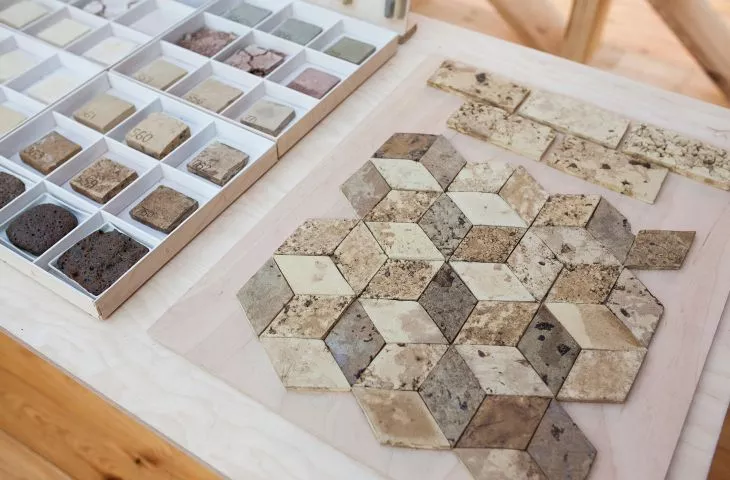"ASHka" by Mateusz Mioduszewski is a project from the borderline of material science and design. The idea, initiated as part of his diploma at the Academy of Fine Arts in Katowice, focuses on the problem of managing post-production waste.
The main goal of the project was to make the most effective, creative and constructive use of industrial waste taking into account its ecological and economic potential.
Even the subtle titer of the chemical composition of ash shows color changes in the target material
© Matthew Mioduszewski
power plant ash and its potential
The raw material used is fluidized bed boiler fly ash obtained from the Jaworzno III power plant. Mateusz Mioduszewski's research on the starting material created a large material base, which he used to shape the ceramic material.
The author shaped the material by hand by combining ashes with clays
© Matthew Mioduszewski
Trials included variation in the relationship and interrelationship of the quantity and percentage of ash supplemented with a binder in the form of various types of clays, as well as varying sintering parameters of the raw materials used in the creation of ceramics. Cooperation with the Department of Materials Engineering at the Silesian University of Technology helped the author to study the actual technical parameters, as well as to isolate a material that would be suitable for further processing.
"ASHka" can be used to produce pots
© Matthew Mioduszewski
universal ash ceramics
The sample products shown are based on a mixture that contains as much as seventy percent of power plant waste combined with a variety of clays. The fired ashes took on a light beige color, which became the basis for all the material. The material is shaped by hand by combining light clays and dark clays giving a unique character to the created objects. Interestingly, a slight change in the chemical composition of the ash shows various color changes in the target material.
Glazed tiles are resistant to moisture
© Matthew Mioduszewski
In addition, the tested final material showed higher absorbency. The author used this feature to create pots that are able to hold moisture longer. Another product is tiles. Protected with a glaze, they can be used in rooms with increased humidity.
compiled by {tag:AuthorAiB}
illustrations courtesy of Matthew Mioduszewski






































